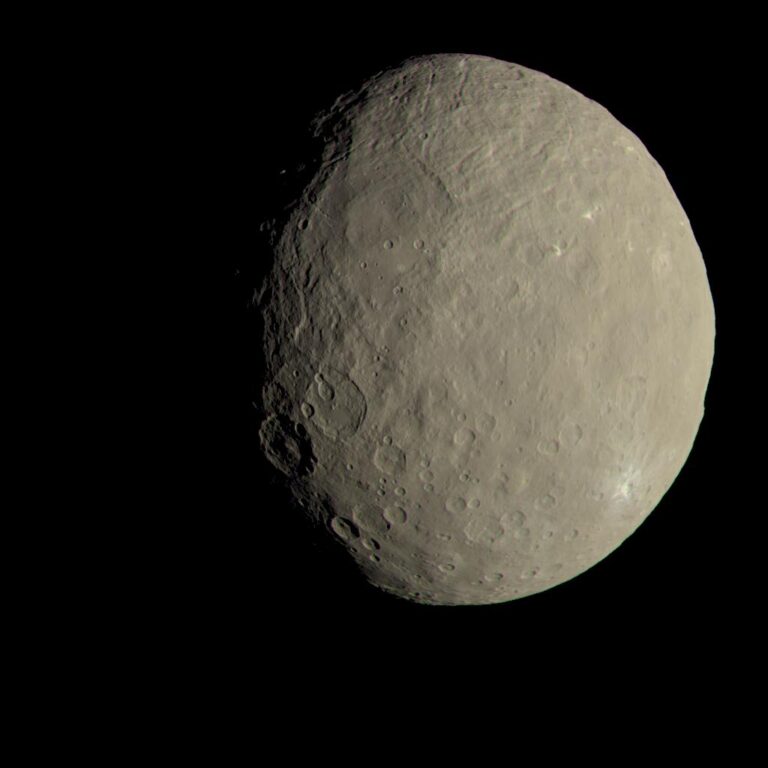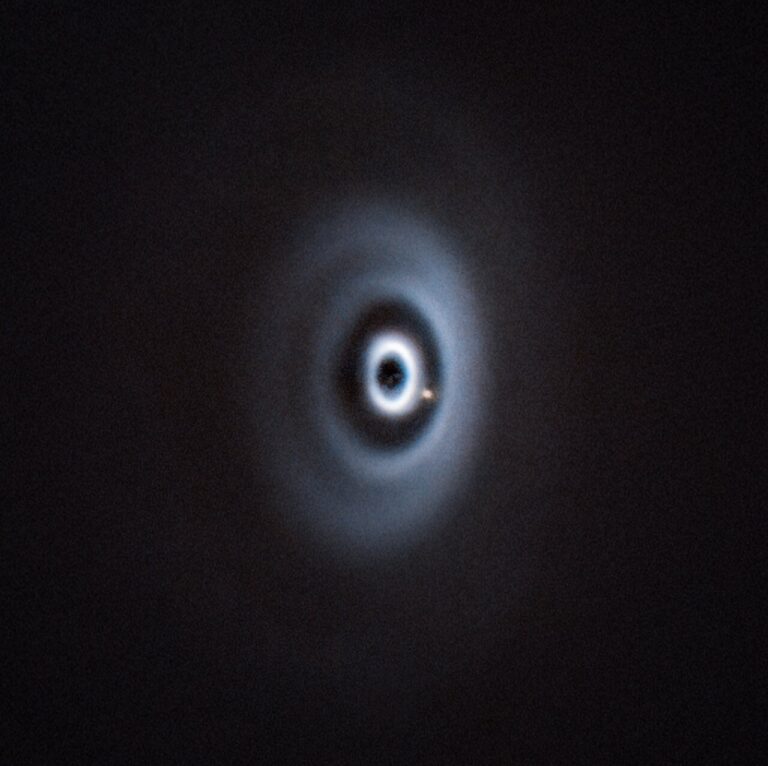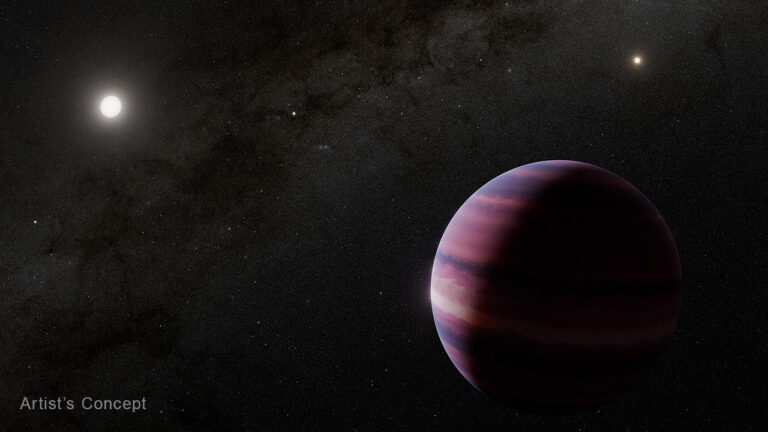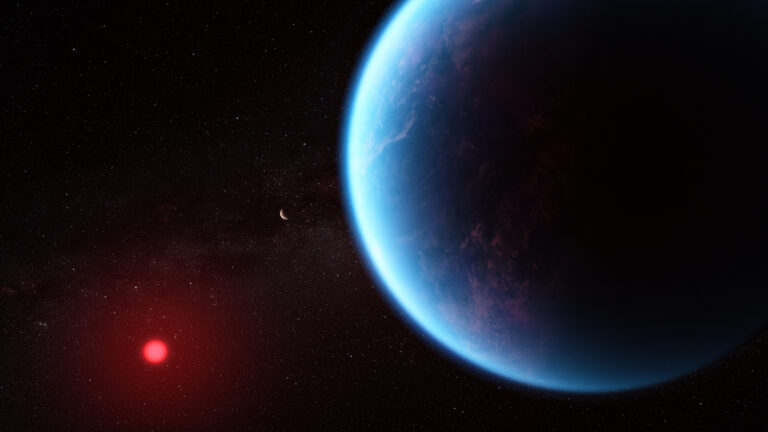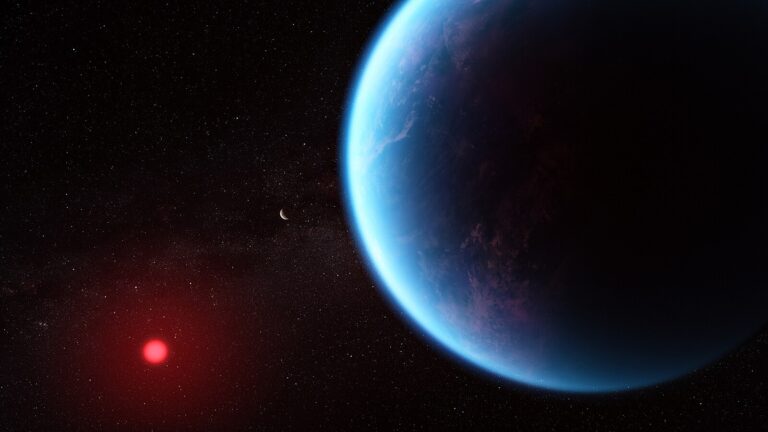Key Takeaways:
The artist’s concept depicts Kepler-186f , the first validated Earth-sized planet to orbit a distant star in the habitable zone. The size of Kepler-186f is known to be less than ten percent larger than Earth, but its mass, density and composition are not known. Previous research suggests that a planet the size of Kepler-186f is likely to be rocky. Prior to this discovery, the “record holder” for the most “Earth-like” planet went to Kepler-62f, which is 40 percent larger than the size of Earth and orbits in its star’s habitable zone.
Kepler-186f orbits its star once every 130 days and receives one-third the energy that Earth does from the Sun, placing it near the outer edge of the habitable zone. If you could stand on the surface of Kepler-186f, the brightness of its star at high noon would appear as bright as our Sun is about an hour before sunset on Earth.
The new-found body, orbiting the red dwarf star Kepler-186 and designated Kepler-186f, is the fifth — and outermost — world to be discovered in this system.
“This is the first definitive Earth-sized planet found in the habitable zone around another star,” said Elisa Quintana of the SETI Institute at NASA Ames Research Center in Mountain View, California. “Finding such planets is a primary goal of the Kepler space telescope. The star is a main sequence M dwarf, a very common type. More than 70 percent of the hundreds of billions of stars in our galaxy are M dwarfs.”
Of the nearly 1,800 confirmed exoplanets found in the past two decades, approximately 20 orbit their host star in the habitable zone — a range of orbital distances at which surface water on a planet with an atmosphere would neither freeze nor boil. However, all of these previously discovered worlds are larger than Earth, and consequently their true nature — rocky or gaseous — is unknown. On the basis of the observed dimming of starlight from Kepler-186, the scientists estimate that this newly discovered planet is roughly the same size as Earth.
“Theoretical models of how planets form suggest that those with diameters less than 1.5 times that of Earth are unlikely to be swathed in atmospheres of hydrogen and helium, the fate that’s befallen the gas giants of our own solar system,” said Thomas Barclay, a staff scientist for the Kepler mission affiliated with both NASA and the Bay Area Environmental Research Institute. “Consequently, Kepler-186f is likely a rocky world, and in that sense, similar to Venus, Earth, and Mars.”
Traditionally, planets orbiting red dwarf stars were considered to be poor candidates for life. The objection was that star-hugging planets in the habitable zone would become tidally locked and suffer a synchronous or pseudo-synchronous rotation that could make climate on these planets untenable. However, more recent modeling studies suggest that such worlds are not necessarily inhospitable because atmospheric winds or ocean currents could even out extreme temperature variations. In addition, Kepler-186f is far enough away from its host star that it is unlikely to be locked. This greater distance also reduces the danger to any potential life-forms posed by stellar flares, which are more common for dwarf stars.
Since 2012, the SETI Institute’s Allen Telescope Array has been observing Kepler candidate exoplanets looking for signals that would indicate extraterrestrial intelligence. A search for emissions from Kepler-186f has been made over the very wide frequency range of 1 to 10 GHz, but none have so far been found. These observations will be repeated. Note that a detectable signal would require a transmitter approximately 10 to 20 times more powerful than the planetary radar system at Arecibo in Puerto Rico.
According to Quintana, at 490 light-years, Kepler-186f may be too dim for follow-up surveys to probe its atmosphere, even with next-generation telescopes: “However, our research tells us that we should be able to find planets around bright stars that will be ideal targets to observe with James Webb.” NASA’s Webb space-based telescope, now under construction, will be able to directly image planets around nearby dwarf stars and use spectral analysis to characterize their atmospheres.
Finding Kepler-186f is a first, but “it’s not a record we wish to keep,” Quintana said. “We want to find more of these.”


